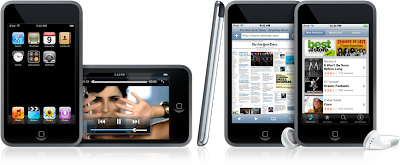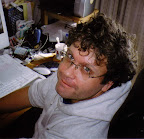I had a quick check up at Dr. Su's office on 1 November - nearly 2 weeks postop. The Xray was good, I was told to walk with one crutch while indoors. I used one crutch for the first time right there in the examination room. I was surprised how easy it was. The doc also cleared me to fly out to Detroit for 7 days minimum, and even indicated I could fly back to Japan after that.
 I did my last PT at the Joint Mobility Center the next morning before I left for Detroit, and really surprised my therapist with my progress. She didn't see me the day prior, and didn't think I was able to walk on one crutch. My session was a bit rushed, because of the flight time in the afternoon - but everything went well. I got a big smile and a Tshirt from the staff.
I did my last PT at the Joint Mobility Center the next morning before I left for Detroit, and really surprised my therapist with my progress. She didn't see me the day prior, and didn't think I was able to walk on one crutch. My session was a bit rushed, because of the flight time in the afternoon - but everything went well. I got a big smile and a Tshirt from the staff.Escape from NY
I flew out of Laguardia airport, and had wheel chair service get me to the plane. This was a good idea, as I got through security more quickly and didn't have to stand for long periods in line. I wasn't able to walk through the detector at all with out a crutch, so they frisked me. The TCA guard that did the frisking was very nice, and not pushy at all. I don't think the scanner picked up my implant - but it wasn't a big deal. The worst part was after they delivered me to the gate - no help after that - mostly because I was there an hour in advance. The flight was delayed an hour, and when they let handicaps and 1st class people in - I couldn't get to the front of the line. The gate attendant told me I should have shoved people out of the way. This wasn't really easy with two crutches under one arm and pulling my wheelie carryon with the other.
This was a NWA flight on a 757. They helped me get to my seat, but there wasn't any real space in front of it. When I explained I was supposed to get a bulkhead seat - they claimed this was it. It was a row behind first class and seemed to have a bit more legroom. The worst part of boarding the plane was it took 45 minutes to complete it! This was made worse by the attendants making people stow their carryons in places other than above their seats. In Japan, a plane this size gets boarded in 15 minutes or so. Maybe NYers are slow, but I have a feeling it was the attendents' fault. Unbelievable.
At Detroit airport, the wheelchair service was great, but they had one guy take two of us at the same time. We had to use several elevators, and a train (12 minutes or so) to get to baggage claim. I was surprised that there were no tag checkers of bags in Detroit - but I got my bags. My mother, uncle and aunt were there to meet me - so it was easy after that. Perhaps the strangest thing at that point was traveling in a passenger car not driven by a cabbie.
Slow Life with Benefits
I stayed with my sister in Temperance, Michigan since then with a couple of trips to my home town in NW Ohio, and my brother's place in Cleveland. Both drives were 1-2 hours, but I had no problems. The embolism socks were used, but I feel they aren't necessary. My sister got hold of a stationary bike from a friend, so I was able to use that as part of my PT. It was a normal crank size, and I had no pain at all! Again, a marked point of progress. I've been doing 10-15 minutes biking each day and all my PT stretches using the bench on my sister's wooden deck. This was pretty good, and the weather usually was unseasonably warm. Over the course of the last 10 days, my bridging and all leg lifts have become extraordinarily easy. I even found I could lift my operated leg while lying on my back - and can now raise it 30° up to 11 times in sequence. I could barely lift it at all in NY. I also found that I was rolling over on both sides in the bed with little or no pain, and even slept on my operated side without realizing it. The most stunning change was standing up and walking without the crutch. This began maybe 4 days ago, and I don't do it on purpose. I usually catch myself and get the crutch right away. There isn't any pain at all, so I'm very pleased. I'll be a good boy and use the crutch for the whole 6 weeks post op, like the doctor says.
My right hip seems to be improving visually as well. The bruising is gone, and the incision is fairly clean. I measured it the other day and it seems to be about 8 inches long. This doesn't bother me a bit, though others might not like it. I can feel some of the stitching - they feel like 1 pound test monofilament fishing line. Although they are supposed to disintegrate and dissolve - it seems they are still there. I caught one knotted end on my pants and it yanked out. Ouch! It also itches at times - but it could be worse I suppose.
The only thing I really wish I could change is the diet here. It's too meaty and all available drinks (except water) are sweetened. I bet I've gained a couple pounds here. I also found myself being more sedentary than I liked, except for a long trip to the shopping mall where I walked quite a bit. I thought perhaps this was related to the vicodan - making me drowsy or lazy. However, this isn't likely; I stopped taking it so frequently, down to 3-4 times a day instead of 8.
Back into the Fray
I'd hoped to do a little traveling before returning to NYC, and even toyed with the idea of visiting my friend in upstate New York. But I became a bit apathetic, and also realized I could only go via a one stop flight. This, and the concern I would be imposing on others made me realize I should just stay at my sisters and return to NYC the day before I wanted to return to Japan.
Before I left NYC, I made tentative arrangements to come back to see the Doc one day before flying back to Japan. To accommodate the MD's schedule we scheduled an appointment for 13 November. My week of lethargy in Michigan pretty much made it clear to me that I needed to get back home to my family. Making the flight arrangements back to Japan was a piece of cake, and after waiting for my sister's schedule to gel - I was able to get the the first flight out of Detroit to NYC tomorrow morning. I have to say I'm a bit pensive. I'm eager to get out of here, but not real thrilled to go through another day in NYC.
Hopefully, there will be no complications in my checkup, and I'll be on my way on Wednesday. :-)

























